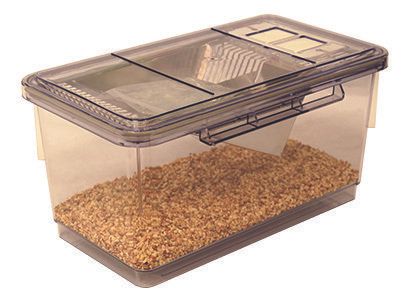Good Things Happen When You Lower Ammonia
Good Things Happen When You Lower Ammonia
Ammonia is Bad for Your Rodents
Prolonged exposure to ammonia has physiological effects on the health of rodents. Studies have shown changes to their respiratory system and immunological defense systems from exposure to ammonia.
Ammonia is Bad for Your Health
Humans have a low tolerance for ammonia, which causes irritation to the eyes, nose and throat with prolonged exposure. The cumulative exposure of opening cages, even under a hood, has an additive negative effect on your health. Lowering Cage ammonia is vital to reducing your overall exposure.
Bedding and Ammonia
Besides acting as enrichment, bedding is used to control ammonia. So more must be better. Right? The Hygieia IVC actually uses less bedding, and with fewer cage changes per year, money is saved by buying and storing less of it.
Low Ammonia Extends Cage Changes
When the cage change interval can be extended to 21 days due to little or no ammonia in the cage, rodents are under less stress. Nests are preserved and pheromones clues are undisturbed. Stress hormone corticosterone will spike after cage changes and stress clearly affects research models.
Extended Cage Cages Saves Labor
Tremendous amounts of labor can be saved with 21day cage changes. Saving labor will result in large dollar savings in your facility. Rededicate your new found time to other activities that will advance your research.
Saving Energy and Resources
The Hygieia IVC uses half the energy of conventional IVCs operating at only 30 ACH. Less ammonia in the cages means less energy required to rid it from the room or building. When cage changes are extended to 21 days energy is saved by using less water, electricity and steam in the wash area.

Still Not Convinced?
Still Not Convinced?
We can provide you with a COST ANALYSIS
so you can see the savings that 21 cage changes can mean. You might even pay for your new Hygieia IVC in as little as 3 years.
What is your Ammonia Score?
What is your Ammonia Score?
We will help you MEASURE THE AMMONIA IN YOUR CAGES with our exclusive noninvasive wireless sensors. We will lend you the equipment and show you how easy it is to measure ammonia.
Click to Read the poster on the NIH Ammonia Study.


